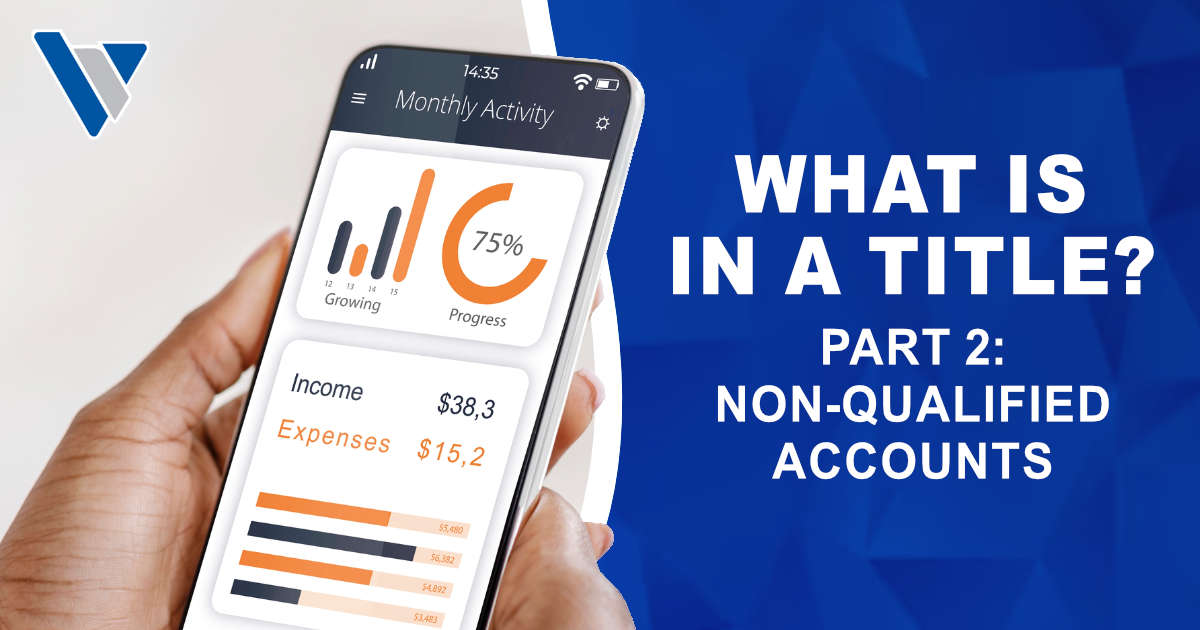In my last article, I discussed the importance of proper titles in regards to qualified accounts,...

Our investment philosophy was created by our Investment Manager Brian Tillotson and is based on 5 core principles that remain consistent no matter the markets and has been the Virtus Wealth Management strategy for over 20 years. The flexibility within the philosophy allows us to adapt to any specific market or client.
Our portfolios are primarily based on the principle of asset allocation. The principle that proper diversification, while not able to prevent any losses, may minimize them. Over the long-term, proper diversification enhances returns.
Proper diversification is the process of developing a portfolio with the goal to limit the impact of huge losses by any one asset class on the portfolio as a whole. Correlation between asset movements is the deciding factor on whether a portfolio is properly diversified.
Stocks and bonds are the two most common public investments. There are times when bonds offer positive diversification compared to stocks. There are also many times bonds don’t offer enough diversification. This is where alternative assets may help. An alternative asset is any asset other than public stocks or bonds. This could include private real estate, private equity, commodities, Cryptocurrency, oil and gas, currency, hedge strategies and many other different assets. The more assets like this that are less correlated to stocks, the better diversification in a portfolio. If an investment has zero correlation to stocks, for example, they may make or lose money irrespective of how stocks and the market perform.

Along with our core asset allocation and alternatives, we also try to add alpha (or additional value over a benchmark) in each asset class in the portfolio. This is accomplished by adding investments in areas we expect to out-perform the core assets. Typically, this is done in either the alternative or equity (stock) portfolios. We believe being active investors for our clients versus passive. This might include over-weighting in a different sector, like energy stocks in 2022, or adding additional alternatives to help protect against expected downside movements.
Our method for selecting the stocks in our portfolio is buying stocks of companies in which we believe the price is below their intrinsic value. This is the William Graham and Warren Buffet method. Intrinsic value is the value you assign to an investment based on the cash flow you expect to receive in the future.
Growth investing cares less about profits and cash flow but instead primarily focuses on revenue growth. With this method, as long as earnings of a company are exceeding the industry then growth investors are interested. Historically, growth stocks are more volatile and have bigger swings than value stocks. 1However, if you go back throughout history, value stocks have out-performed growth stocks.
We believe, based on our research, in the importance of utilizing the intrinsic value principles in unison with sector investing. Sector investing is looking at the industries in which our research predicts will outperform in the future. This method is based on the principle that certain sectors or industries perform better depending on their current position in the economic cycle. We might invest in individual stocks in that industry, or sector, or by using an ETF, which gives us broad exposure to the industry.
As active investors for our clients, our job is to manage risk in a portfolio. We believe in the principle of being fully invested at all times. The portfolio can still have a measure of “risk on and risk off,” meaning we will get more or less aggressive based on market conditions. Changing the risk profile might mean over-weighting or under-weighting a certain asset class or investing in certain assets with the allocation that are more or less risky. Our strategy, including asset allocation and “risk on versus risk off” are all based on the goal to smooth out returns and limit significant losses as much as possible.
At Virtus Wealth Management, we believe customizing all of our strategies to your objectives. We do manage investments in house but we also have other options:
The key is to have multiple solutions so we can help find the best fit for you.
12 schools of investing: growth vs. value, Fidelity